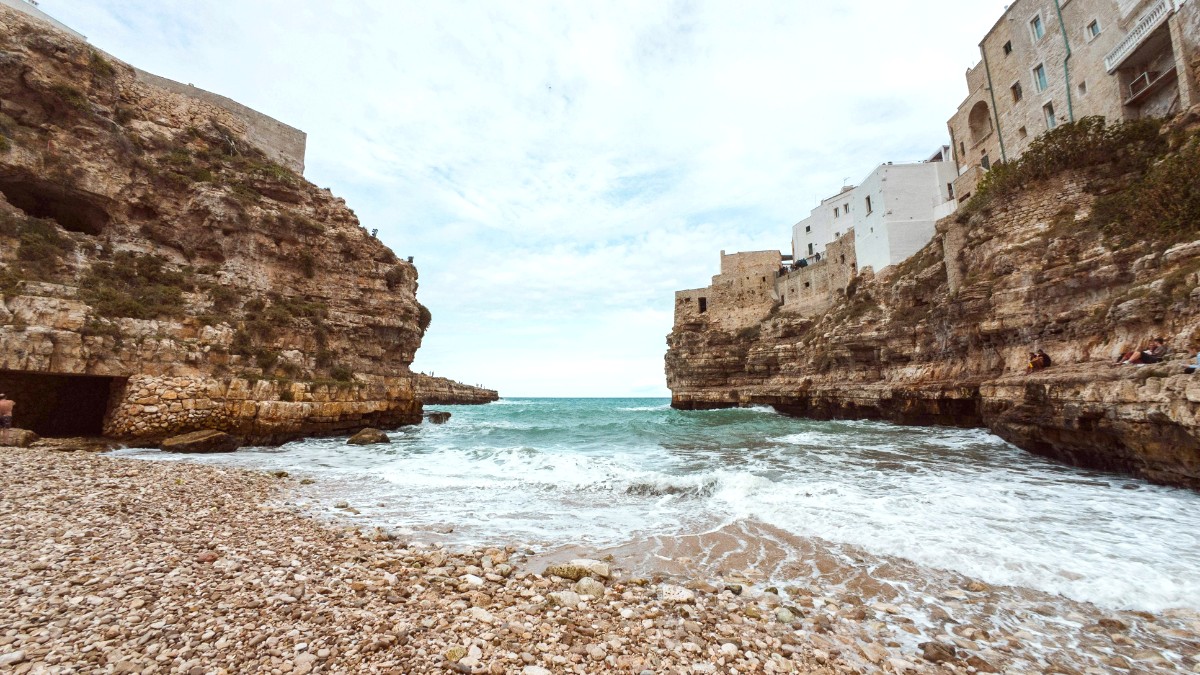
Puglia, Italy
Taranto's culinary traditions link to its position on the Ionian Sea and the Mar Piccolo's unique ecosystem. For millennia, the sea has yielded abundant, fresh seafood, forming the cornerstone of the local diet. Puglia, Italy's largest olive oil producer, makes extra virgin olive oil a fundamental ingredient, used generously in almost every dish.
The fertile land gives a bounty of fresh vegetables, durum wheat for pasta and bread, and legumes. Historical influences, from Magna Graecia to subsequent Roman, Byzantine, Norman, and Spanish rulers, subtly shape the cuisine. This heritage emphasizes freshness, simplicity, and bold flavors. Taranto's famous mussels, from the Mar Piccolo, embody this unique connection between geography, history, and food.
Mussels (cozze), octopus (polpo), anchovies (alici), sea urchins (ricci di mare), local fish paramount. Extra virgin olive oil central to Puglian cooking; fruity, sometimes peppery notes.
Turnip greens (cime di rapa), fava beans (fave), artichokes (carciofi), wild chicory (cicoria selvatica), ripe tomatoes are seasonal staples. Hand-made pasta shapes, specifically orecchiette and cavatelli, are popular.
Chickpeas (ceci), lentils (lenticchie), and fava beans feature prominently in hearty soups. Fresh cheeses like burrata, mozzarella, and ricotta forte are widely consumed. Pane di Altamura from nearby Altamura, thick crust and soft interior, is famous.
Taranto's most famous dish. Mussels cooked in a flavorful sauce with fresh tomatoes, garlic, extra virgin olive oil, white wine, and often a hint of chili.
The unique flavor of Mar Piccolo mussels makes this a top choice. Find it in nearly all seafood restaurants.
Spaghetti with sea urchin roe, a delicate and intensely briny pasta dish. Orecchiette (little ear pasta) with turnip greens, garlic, and anchovies.
Sea urchin availability depends on season. Orecchiette is a Puglian staple, hearty and flavorful. Find these in seafood trattorias or traditional osterie.
A rich, baked casserole with rice, thinly sliced potatoes, Taranto mussels, onions, and tomatoes. Focaccia Barese, thick and soft, with cherry tomatoes, olives, olive oil.
Tiella: a hearty, savory experience. Focaccia: a beloved staple throughout Puglia, find it fresh daily in local bakeries (panifici).
Small, oval-shaped shortcrust pastry tart filled with rich custard cream. Popular throughout Puglia.
Taralli: Savory, crunchy, ring-shaped crackers, flavored with olive oil, fennel seeds, chili, or salt. Zeppole: Deep-fried dough fritters, often with sugar, cream, or cherries. Especially popular around holidays.
Taranto, while not renowned as major Italian cities for high-end fine dining, does feature a few upscale restaurants. These focus on refined Puglian cuisine with a modern twist, often emphasizing fresh seafood and local ingredients with sophisticated techniques. Inquire locally or check online reviews for current recommendations.
Numerous pizzerias for sit-down or take-away pizza exist. Bakeries (Panifici) serve fresh bread, focaccia, and panzerotti. Local Bars feature simple panini, pastries for breakfast, and light lunches. Street Food Vendors sell panzerotti, puccia, or fried delights, especially around markets.
Mercato Fadini (Via Francesco Fadini), a large municipal market, bustles with fresh produce, meat, fish, cheeses, and local specialties. It presents local life and ingredients for picnics or ready-to-eat local delights. It typically opens in the mornings, closed Sundays. Smaller local markets pop up on specific days in different neighborhoods.
This is the most common type of dining establishment in Taranto. They deliver a good balance of quality, ambiance, and price.
Look for "trattoria" or "osteria" signs for traditional local food, often serving generous portions of pasta, meat, and fresh seafood. Many locate in both the Borgo Umbertino and the revitalized parts of the Città Vecchia.
These establishments capture an authentic taste of Taranto's culinary heritage.
They make an ideal choice for a genuine local dining experience without the high cost of fine dining.
While Italian cuisine understandably dominates, you might find a few Asian restaurants (e.g., Chinese, Japanese sushi) or kebab shops.
These mostly serve local preferences rather than a diverse range of international flavors for tourists.
For an authentic experience, focus on the local Puglian fare.
This choice will give the most authentic tastes of the region.
Availability is very limited or non-existent in Taranto. Travelers with these requirements plan to prepare their own meals from market ingredients or rely on universally acceptable options.
This may require sourcing specialized products.
Awareness of gluten-free diets increases in Italy. Some pizzerias have gluten-free crusts. Larger supermarkets stock gluten-free products.
Larger restaurants might accommodate gluten-free requests. Clearly inform staff about allergies or intolerances. For severe allergies, precise communication with restaurant staff is prudent.
Beyond translation tools, online forums and blogs for travel with dietary restrictions offer community-sourced recommendations for restaurants or shops in Taranto.
During religious festivals (e.g., Holy Week), specific traditional pastries or dishes prepare. Seafood availability is generally best in spring and summer. Autumn brings grape harvest and olive harvest.
Formal tourist-oriented workshops are limited directly in Taranto.
Mussel Farms: Boat tours include visits to the mussel farming areas in the Mar Piccolo.
The wine regions near Taranto, specifically Manduria (for Primitivo wine), have wineries that deliver tours and tastings.
Some restaurants are directly on the Mar Piccolo, with fresh seafood and views of the mussel farms and tranquil inner sea.
These provide a distinct ambiance for your meal.
Experiencing mussels directly from the Mar Piccolo, often raw with lemon or simply steamed, is a quintessential Taranto culinary experience.
This experience highlights the city's unique connection to its environment.
The feast day of Taranto's patron saint, San Cataldo, celebrates annually in early May with religious ceremonies, processions, and festive events.
This festival sometimes features music, art, and cultural events. It celebrates the city's unique geography and maritime heritage. Check local event calendars for current information.
Autumn brings the grape and olive harvests, leading to local wine and olive oil festivals. Spring and summer often highlight seafood availability.
Engage with locals at markets or small eateries for the most authentic recommendations. This often uncovers hidden culinary gems.